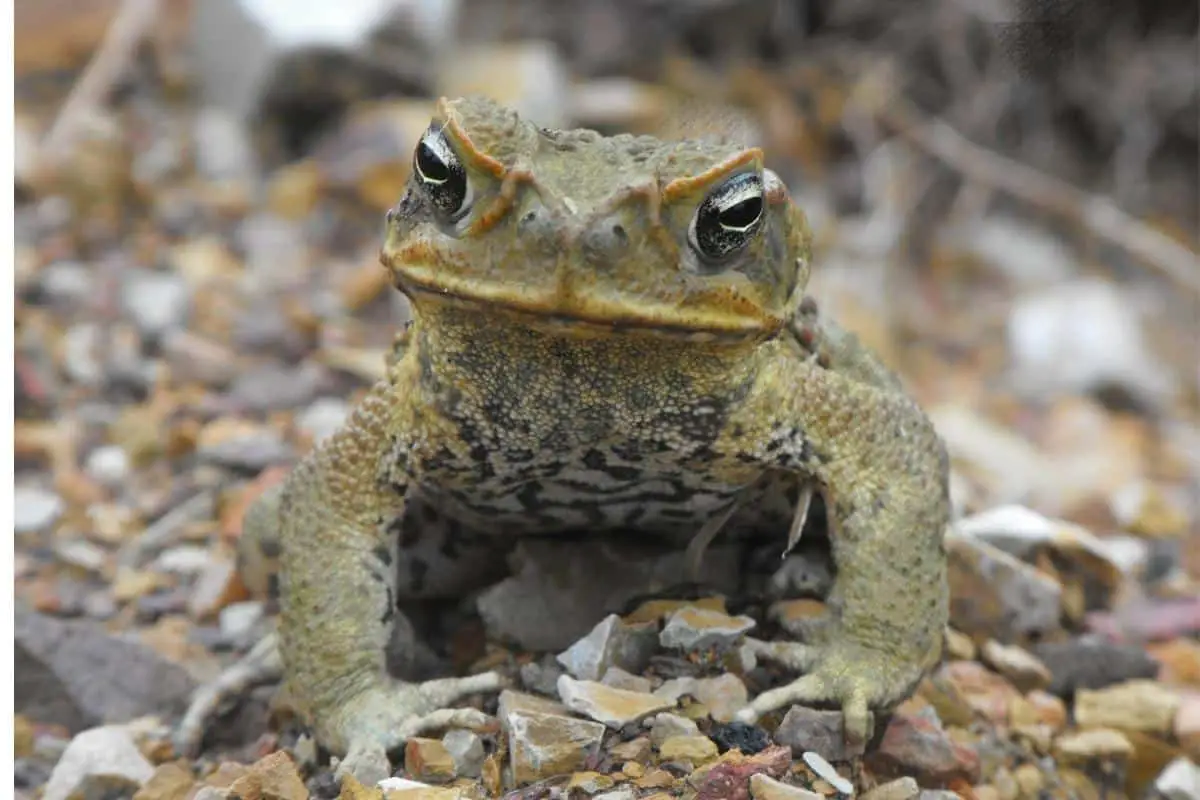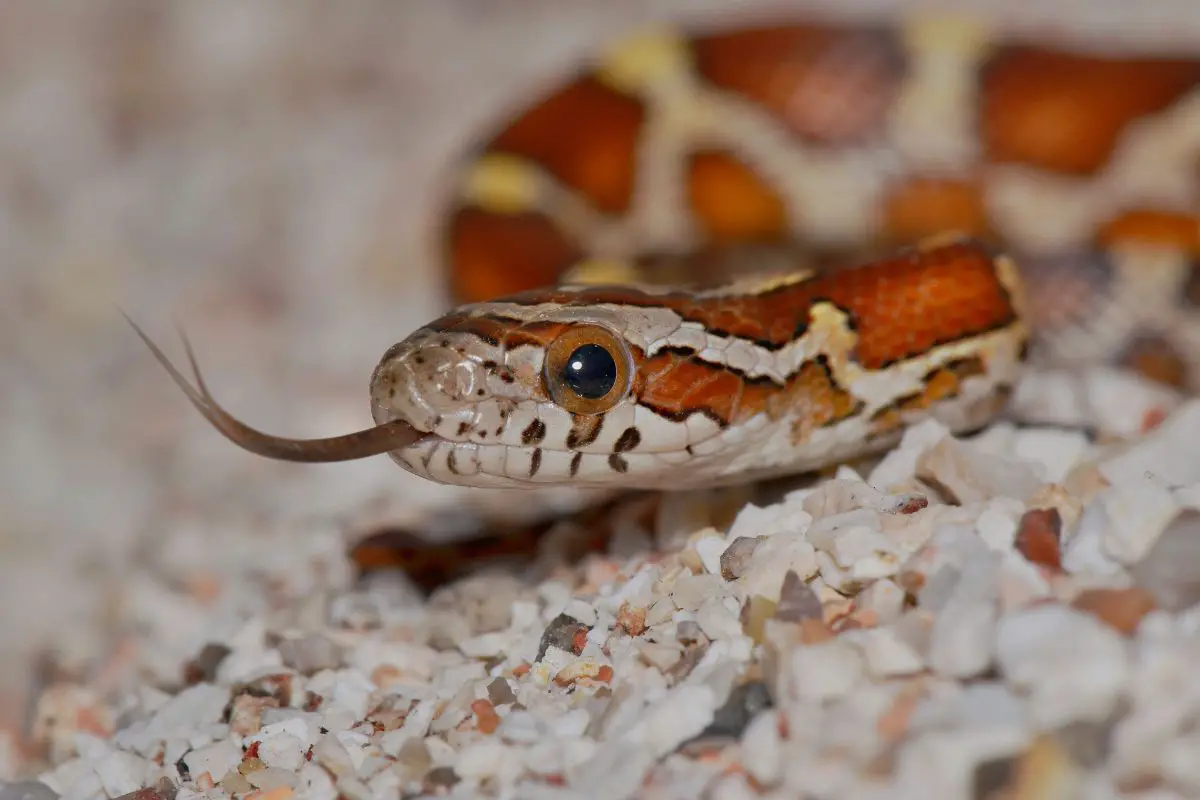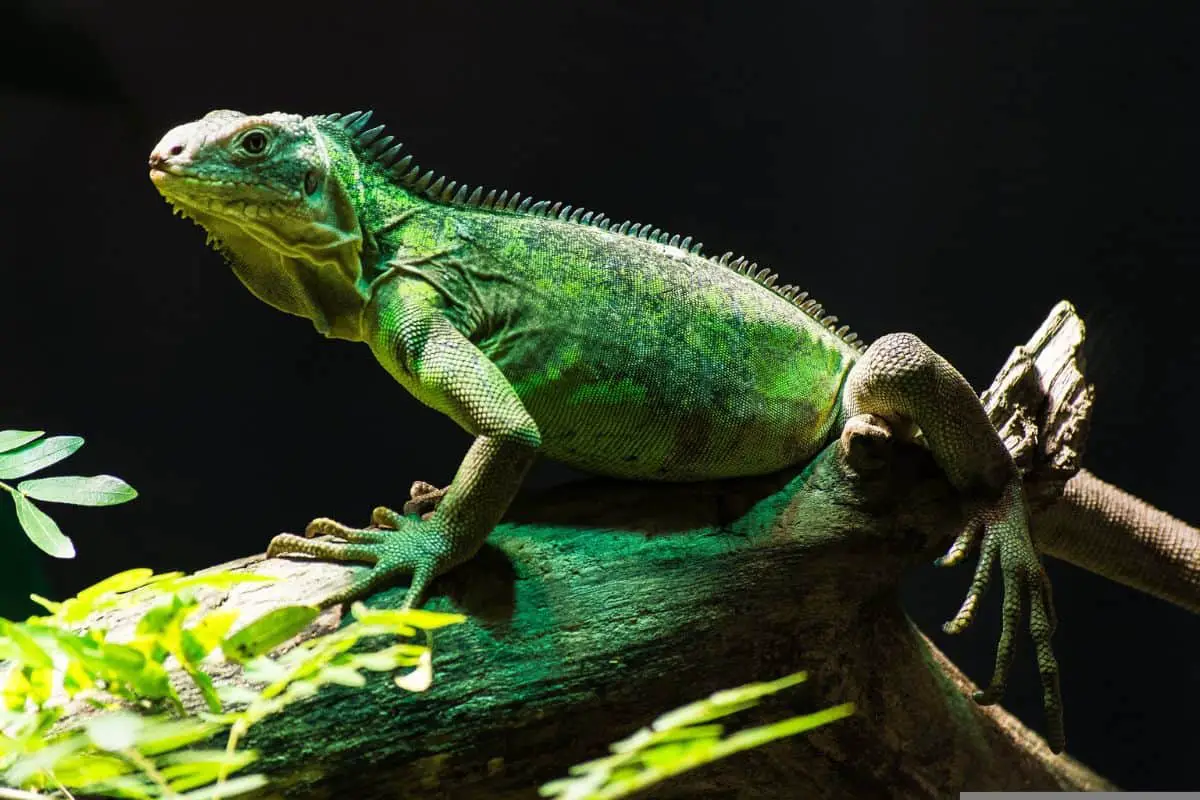Some people might be surprised to learn that there are frogs that eat birds because most frogs are insectivores and feed on invertebrates. Some frogs, particularly the big ones, have the power to eat and consume creatures of all sizes, including those that are as large as themselves. To help you learn more about the frog species that exhibit these traits, here’s a list of frog species from around the world that consume birds as part of their diet
10 Frogs that eat birds
Just because the following frogs are capable of eating birds in some cases, it doesn’t mean that birds are a regular part of their diets. As opportunistic eaters, many of these frogs will eat pretty much anything that crosses their path and will fit into their mouths. If that happens to be some type of bird then so be it.
1. American Bullfrog
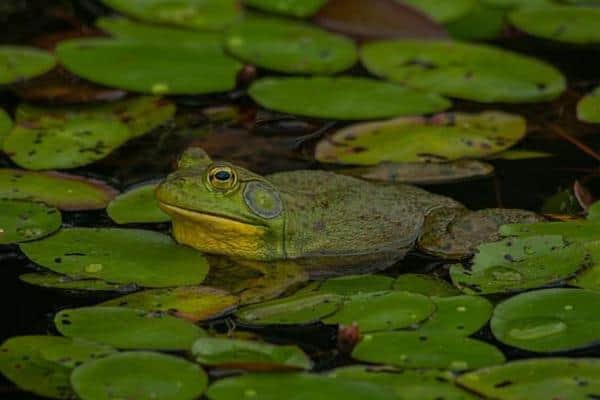
Scientific Name: Lithobates catesbeianus
One of the most prevalent frog species in North America is the American Bullfrog. These amphibians are large frogs weighing up to more than 2 pounds.
Their tadpoles can grow up to 6 inches long and are green or yellow with black spots. They can be found from Canada to Mexico, and from California to Florida.
Bullfrogs are known to eat almost anything smaller than themselves. The frogs consume small birds, bats, rodents, newts, and even other frogs in their diet. These creatures inhabit shallow waters, such as the edges of ponds and streams.
2. Surinam Horned Frog

Scientific Name: Ceratophrys cornuta
The Surinam Horned Frog is a small frog that lives in northern South America. It also goes by the name “Amazonian Horned Frog.” This species can be found in freshwater marshes and pools.
Frogs of this species can reach a size of 8 inches and are recognized by their large mouth and horn-like shape on top of their head. These frogs have powerful jaws and sharp teeth that enable them to consume small reptiles, including birds and other small animals.
Male frogs are dark green to lime in color, while females are tan. Females are also physically larger than males.
3. African Bullfrog
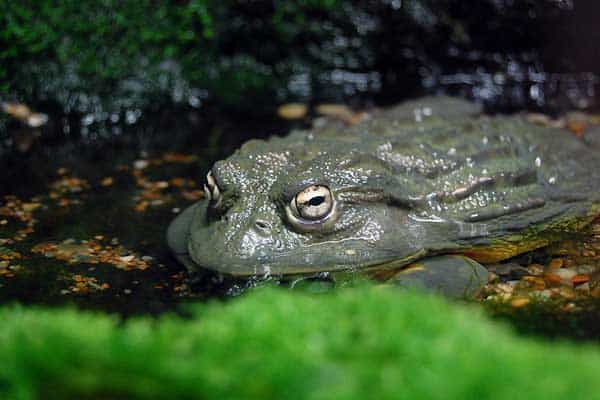
Scientific Name: Pyxicephalus adspersus
The African Bullfrog is a large, olive-green frog that lives in Africa’s open grasslands. It feeds on small birds, frogs, lizards, and insects. Male African Bullfrogs can grow to be 9.5 inches long, while females can grow to be 4.5 inches long.
These frogs are ambush predators, spending hours buried in the ground with only their noses showing while they wait for their prey. During the dry season, these animals hibernate underground for 10 months. They have a lifespan that typically lasts up to 20 years but can last up to 45 years in captivity.
4. Khorat Big-Mouthed Frog
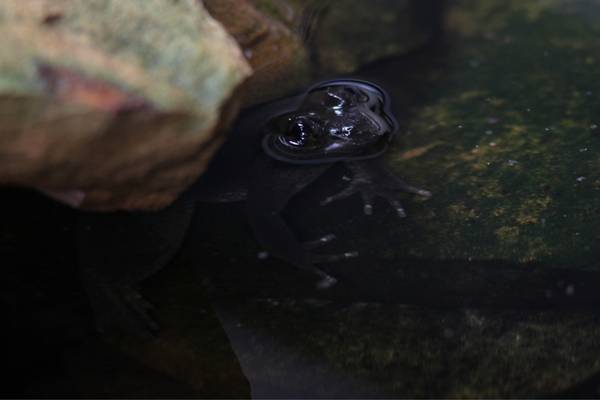
Scientific Name: Limnonectes megastomias
The Khorat Big-Mouthed Frog is an amphibian species native to Thailand. You can find this aquatic frog in the bamboo and evergreen forests close to the Khorat Basin.
This frog is also known for having fangs that are larger in males than in females. Adult males can reach 4.8 inches in length, while females can reach 3.4 inches.
They’re also carnivores, eating other animals, primarily small birds and insects, but will also eat smaller frogs seen in their habitats. Just like African bullfrogs, they ambush their prey for food by waiting in hidden areas.
5. Cranwell’s horned frog
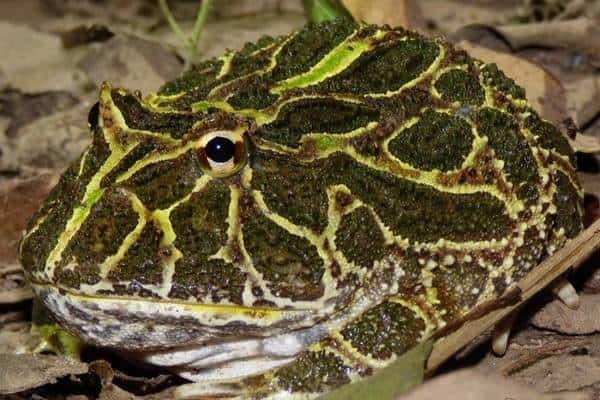
Scientific Name: Ceratophrys cranwelli
Cranwell’s horned frog is a small, green amphibian native to South America. They can be found in Argentina, Bolivia, Paraguay, and Brazil. These frogs range in size from 3.1 to 5.1 inches and weigh up to 1.1 pounds.
Since they’re nocturnal, these frogs hunt at night when they can camouflage to blend in with their surroundings. These horned frogs are carnivorous amphibians that eat mostly insects and frogs, but will also eat small birds and mammals if given a chance. These horned frogs prefer dry or subtropical grasslands. The calls of the males are known for sounding like a bass horn.
6. Cane Toad
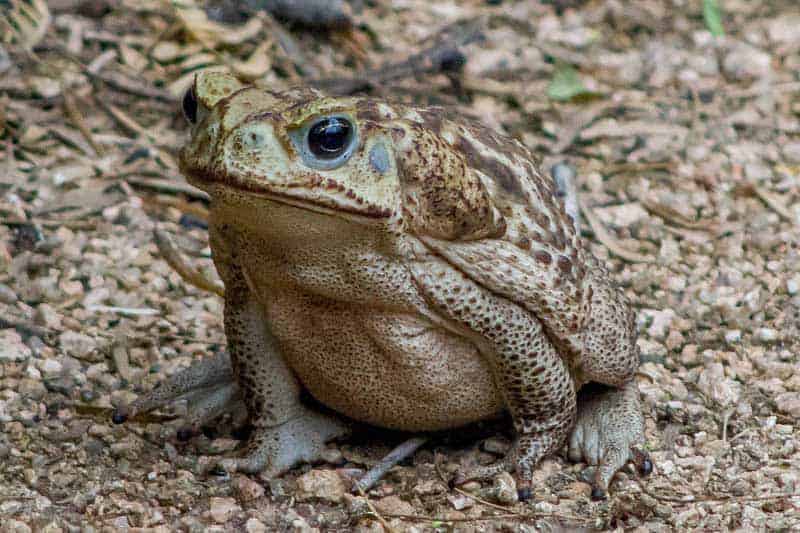
Scientific Name: Rhinella marina
Cane Toads are native to South America, but they’ve also been discovered in Central America and parts of North America. They were also introduced in several countries, including the Philippines, Japan, Fiji, and Australia.
This species is found in rainforests, where it lives on dry land and breeds in confined water areas. These toads are large amphibians reaching lengths of up to 9 inches.
The toads’ bodies are covered in warty bumps, and their skin is dry and rough. Their skin colors range from grey to olive to yellow-brown to red-brown. The males of this species have a distinctive call that resembles a motor running.
7. Goliath frog
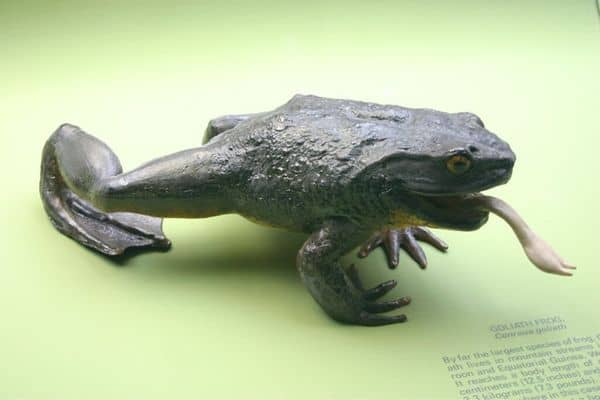
Scientific Name: Conraua goliath
The Goliath frog is the world’s largest species of frog. It can grow up to 12 inches long and lives in West African tropical rainforests near rivers. They stay in shallow bodies of water during the day and emerge at night to hunt for food. While we couldn’t find a picture of a live goliath frog for you, the example above gives you a rough idea of their appearance.
These massive frogs have been observed feeding on various animals, including small birds, crustaceans, fish, and other amphibians. Tadpoles, on the other hand, are herbivores that primarily consume Dicraea warmingii, a type of riverweed. They have a lifespan of up to 16 years but can live in captivity for up to 21 years.
8. Helmeted Water Toad
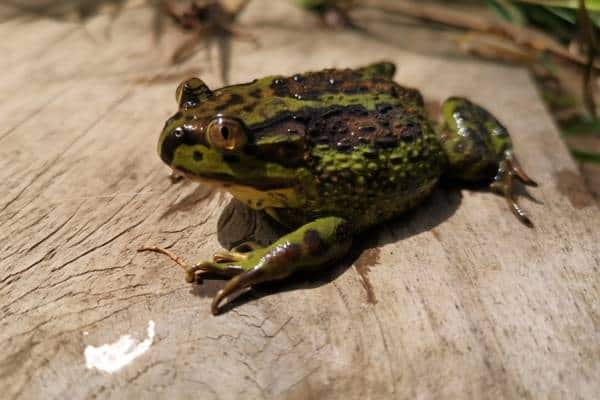
Scientific Name: Calyptocephalella gayi
The Helmeted Water Toad is a large frog species native to Chile. They’re aquatic to semi-aquatic frogs that spend the majority of their lives in bodies of water such as lakes, rivers, and ponds.
Females can grow to be 13 inches long and weigh up to 2 pounds. Males are much smaller than females, measuring up to 6 inches in length.
Young helmeted water toads have colors that range from yellow to green, while dark gray colors are seen on old toads of this species. Like other large toads, they eat anything that’ll fit in their mouths. This includes fish, small mammals, birds, and other frogs.
9. Argentine horned frog
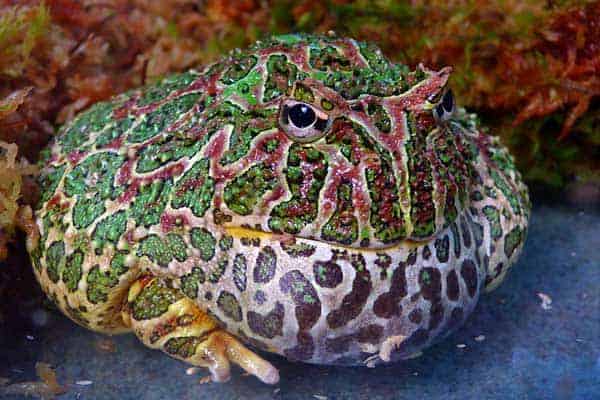
Scientific Name: Ceratophrys ornata
The Argentine horned frog is a species of bird-eating frog found in Argentina, Uruguay, and southern Brazil’s moist grasslands. Because of their feeding habits, these amphibians are also known as ornate pacman frogs.
The frogs of this species are voracious eaters, feeding on anything they can find, even those animals that are as big as them. They’re ambush predators that’ll wait in silence for their prey before attacking and eating them whole while suffocating them. Their prey can range from small insects to birds and other frogs.
10. Indus Valley Bullfrog
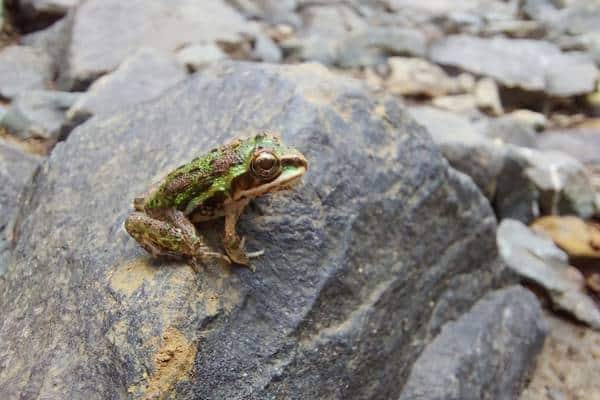
Scientific Name: Hoplobatrachus tigerinus
The Indus Valley Bullfrog is an Asian frog found in Bangladesh, Myanmar, Afghanistan, India, Pakistan, and Nepal. It can reach a length of 6 inches and is green or brown with dark spots. During the breeding season, the males turn yellow.
They’re typically found in freshwater areas, where they feed on invertebrates such as mammals and birds. Their tadpoles also consume mosquito larvae found in their environment.
